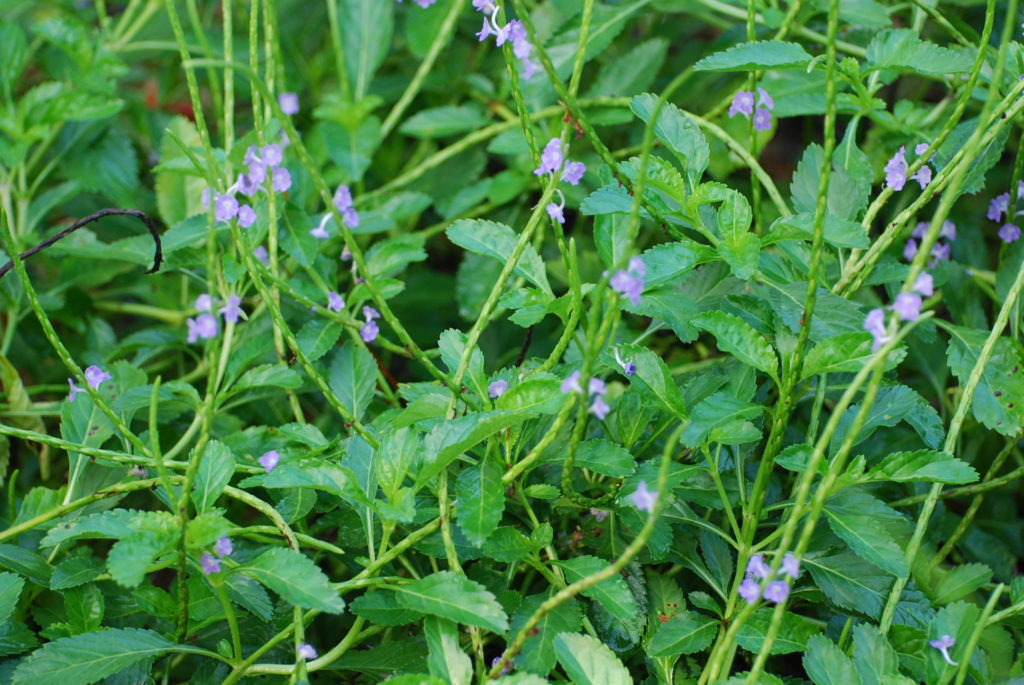
Blue Porterweed
Stachytarpheta jamaicensis
Blue Porterweed is found in the Rocklands of the Everglades to Key West in open, sunny places. The leaves are three inches long and a bit leathery and smooth. It has a low, mat forming growth usually under 18 inches tall.
The small blue flowers are born on a whip like spike and are very attractive to butterflies. The larva of the Tropical Buckeye Butterfly feeds on the leaves.
The exotic Nettleleaf Vervain is up to six feet tall. Its leaves have a more quilted look and may be a bit hairy. It is invasive and is almost always sold as the native species. It should not be planted. Click here for more info.
Blue Porterweed prefers dry to moist soil and is surprisingly tolerant of short term fresh water flooding. It tolerates some salt air in back of other coastal shrubs.
This makes a nice edge along a butterfly garden where it will live for years unless there is a freeze. Usually it comes back from stubs or seedlings. You may want to keep it just a bit back from where its ranginess can be noted easily.
The stems are hollowed by a moth caterpillar during the winter. Because of this, the plant should be cut back to a few inches and the stems thrown away. In March, when the weather warms, new growth will fill out the planting and fresh flowers will form until late fall.
In the Florida Keys native Porterweed is found along the coast behind Sea Lavender, Chapman’s Cassia, Beach Elder, Sea Oxeye Daisy, Salt Meadow Cordgrass, Blackbead, Black Torch, Bay Cedar and Silver Palm.
You can mix this plant with your favorite wildflowers and enjoy the many butterflies that it attracts.
For more information click here.